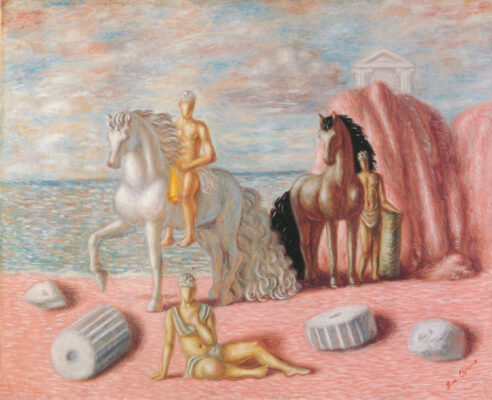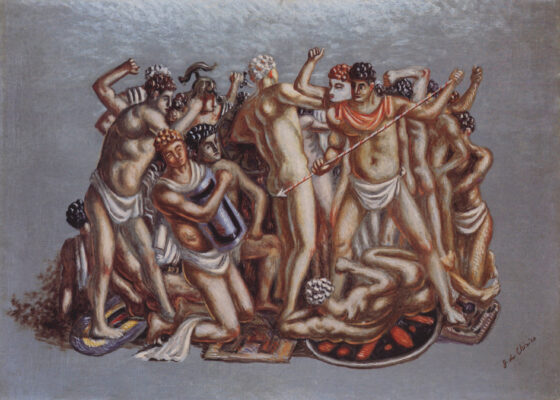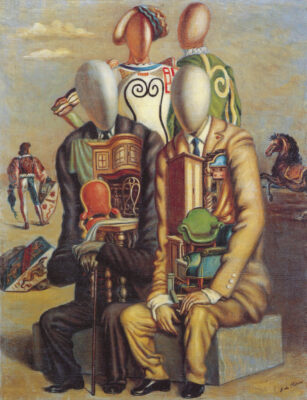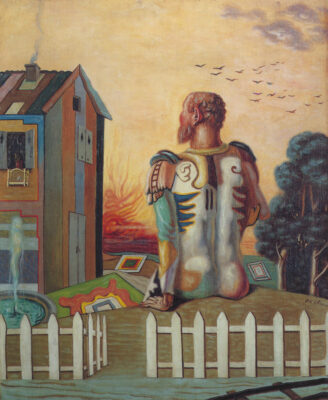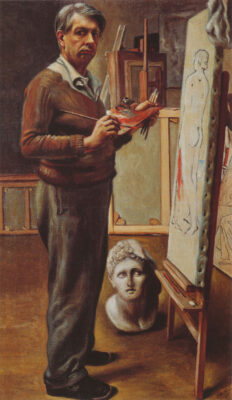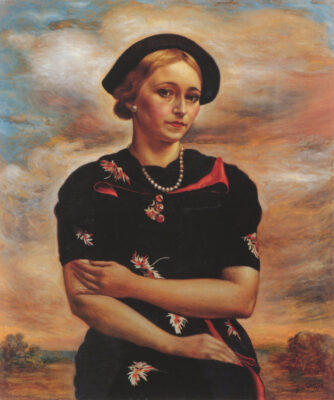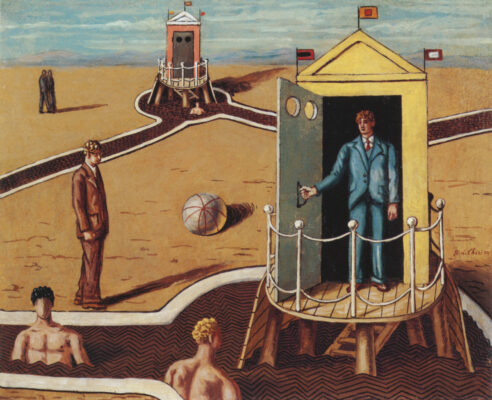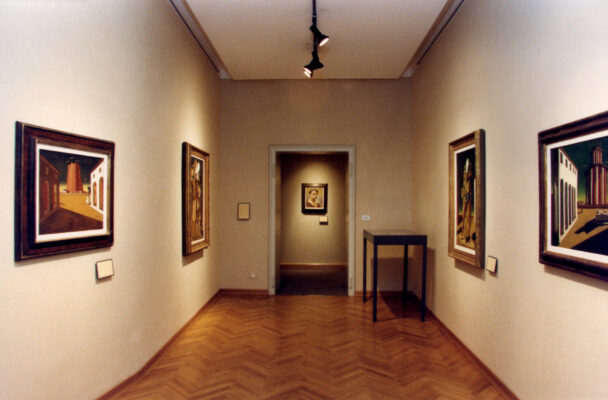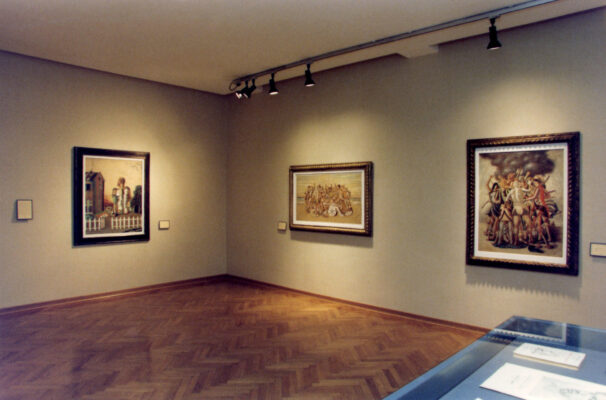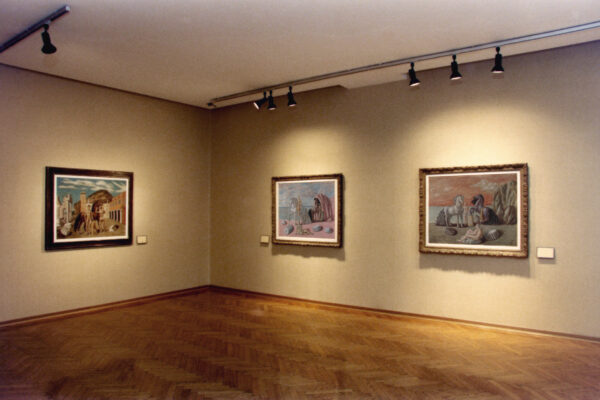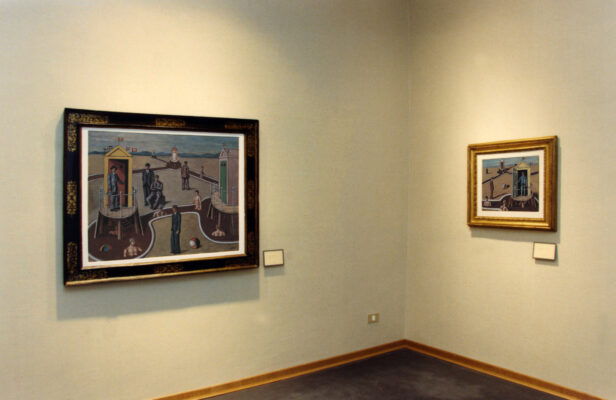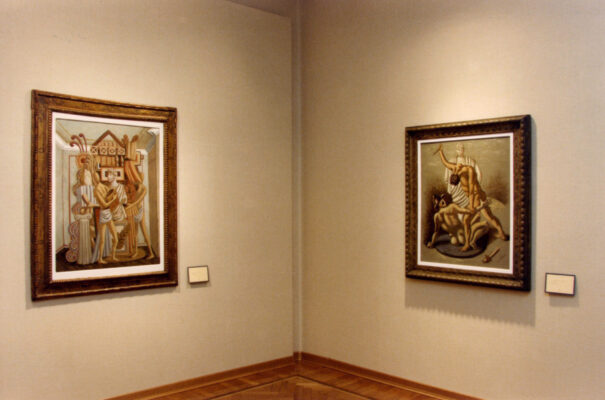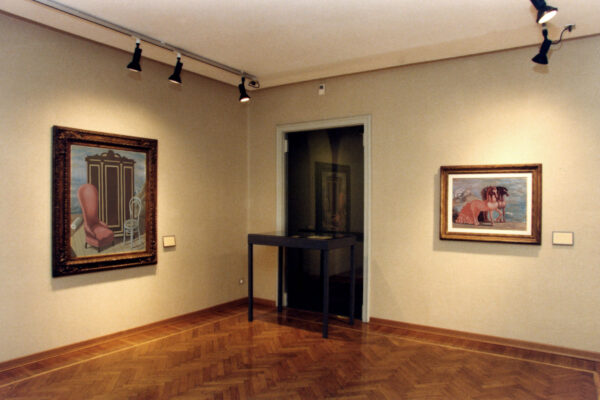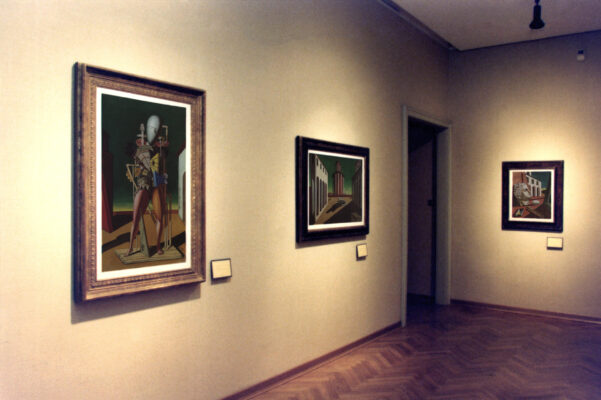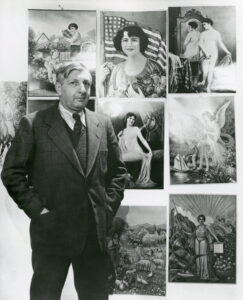Home / Exhibitions / Giorgio de Chirico, gli anni Trenta
Giorgio de Chirico, gli anni Trenta
curated by Maurizio Fagiolo dell'Arco
13.12.1998 — 28.02.1999
Giorgio de Chirico
gli anni Trenta
curated by Maurizio Fagiolo dell'Arco
13.12.1998 - 28.02.1999Show introduction
In the past there were many exhibitions dedicated to Giorgio de Chirico, mostly with the aim of documenting the whole of his output and highlighting his Metaphysical period and Surrealist experiments of the 20s. This last aspect was the subject of an important show in Verona in 1986 which was later seen in Milan at the Palazzo Reale. Critics have usually had a similar view of the artist’s output and have tended to overlook the importance of the decade from 1930 to 1940, which was rich in ideas expressed in an extraordinary variety of means.
The wide-ranging exhibition held in Verona since December 13, 1998 presented a precise feature, focusing the attention on the research that the author conducted in the 1930s. The exhibition, realized under the patronage of the Municipality Department of Culture, City of Verona and the Fondazione Giorgio e Isa de Chirico, Rome was held in two seats, both at Galleria dello Scudo and Museo di Castelvecchio.
The show, with a selection of over fifty paintings lent by important private and public collections in Italy and abroad, underlined in a scientific manner how as the same time as the economic and social decline following the collapse of Wall Street, the artist was inventing a new kind of painting and new imaginative series of works. Past genres, such as self-portraits, landscape, still life, and the nude, were all to be revisited in a new light. New themes, such as the “Puritani” which derived from his experiences with the theatre, and the “Bagni misteriosi”, display surprising inventive and imaginative research: they were based on a static and unreal depiction of characters caught in a continuous play of allusions between myth and daily life.
The exhibition of particularly significant works permitted an analysis of the artist’s re-use of Metaphysical subjects after 1938 and his subsequent use of an iconography dose to Nietzsche’s concept of the “eternal return”, all of which took place in a period when he was ripe for the romantic and baroque style of the following decade.
Among the paintings in the show was relevant the large 1934 self-portrait of the artist standing, lent by the Galleria Nazionale d’Arte Moderna, Rome, a work that created a scandal at the Rome Quadrennial for its depiction of the artist as a worker rather than being idealised. For the first time two pieces from the Alfonso Orombelli collection were exhibited together: these were from a series of large works, others of which were in the show, painted between 1930 and 1935 and based on the theme of the Dioscuri reflecting the childhood in Tessaglia of the brothers Giorgio and Andrea de Chirico.
The artist’s return to museum-going in the first half of the decade were documented through a further series of paintings: views of Genoa, Paris, and Prague, and nude bathers. The series of portraits of the artist’s wife Isabella were represented by the superb Autunno (1935), lent by the Milan public art collection, and there were also an extraordinary series of still lifes such as the 1932 composition with apples and lemons in which the fruitis placed on a cloth shot through with a light that was to disturb even Salvador Dalì.
Ettore e Andromaca (c. 1930), and Malinconia torinese (1938) were among his successful reworkings of the earlier “Manichino” and the “Piazza d’Italia”: these were subjected to a new analysis to demonstrate that they were not products for the market but icons still illuminated by Metaphysics. A dozen imaginatively inventive paintings marked the high point of the decade. Among these, there was the painting Nobili e borghesi (1933), which was both typical of the moment; it was painted and a synthesis of earlier Surrealist experiences. Some recently discovered works were also on show, such as the large canvas of the Bagni misteriosi, shown in Rome and New York between 1935 and 1936, in which the revelation of the enigma behind the cabin door is the artist himself.
The show was curated by Maurizio Fagiolo dell’Arco, a distinguished scholar of de Chirico’s work, together with a committee of specialised art historians. The catalogue, published by Mazzotta, contains a lengthy study by the curator preceded by Emily Braun’s careful consideration of the American and European historical-artistic context of the artist in the years between 1930 and 1940. There then follow articles by Gaia Bindi on the rediscovery of the genre pieces, by Valerio Rivosecchi on neo-Metaphysics and the artist’s reworking of themes developed in the 20s, and by Flavia Matitti on “inventive and imaginative research”. The volume is rounded off with an essay by Nico Stringa on the changing fortunes of de Chirico’s critical reputation, a study of the artist’s self-portraits by Gerd Roos, Alessandro Tinterri on the activity for the theatre, and a study by Fabrizia Lanza of the relationship between de Chirico and is brother Savinio. The catalogue is completed by an epilogue by Renato Diez which also acts as an introduction to the following decade. Laura Lorenzoni provide an in-depth chronology based on numerous unpublished documents from the Fagiolo dell’Arco archives.
